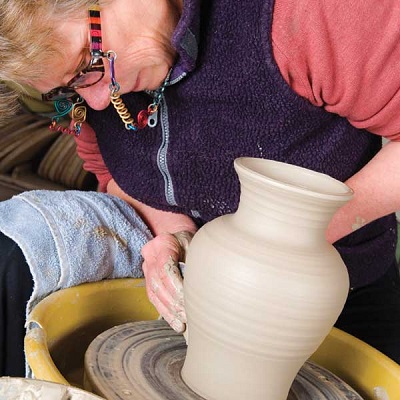Soils and Art
Did you know that soils have played a critical role in art? Since the beginning of civilization, pigments of soils that can be found in the earth have been used in religious and decoration. One of them, ochre, is based on iron, and comes in yellow, red, purple, and browns. It is non-toxic, and are used to make oil paints. These minerals are some of the most common on earth.
Ochre is found at the gravesites of prehistoric man too. Religious spots often had ochre up to a foot deep. The pigments remain vibrant today. It is thought that for religious ceremonies, they would use ochre to dye leather skins, coat weapons, and use it for decorative purposes for everything in their lodges. This has been found on many continents, including Europe (France and Spain), North America, Australian and New Zealand, and many parts of Africa. A lot of Neolithic burials used red ochre in funeral services. The Egyptians used yellow ochre to paint their tombs and pyramids, and was red used as lip gloss and makeup. In Ancient Greece, these soil pigments were also used to paint walls and murals. And in the Renaissance, they were used in murals and Frescos.
The topic of soils is also found in many paintings. The Dutch painter Hieronymus Bosch (1450-1516) used earth and soils as the main subjects of his paintings to evoke deep religious symbolism and meaning. And, while soil is represented in art through agricultural scenes starting in the 1500's, it isn't the exclusive subject of a body of work until the 1950's. this environmental art movement is known as the Land Art Movement - with soils as the focus.

The practice of dying cloth has been continued to this day, with the Bamana people of Mali. They have been making "mud cloth" for clothing as important colorful symbols of their culture. To make mud cloth, white cotton is washed and shrunk, then coated with leaves, turning the cloth a yellow color. Mud is collected from ponds and aged in a pot. The cloth is then painted with multicolored mud. A natural plant chemical is applied to the cloth to make it colorfast, turning the yellow areas white, leaving a pattern against a white background.
Clay has also been important in making pottery for as long as humans have been around, even longer than farming. Pottery has been found on all continents. This helped people preserve food longer, especially seafoods and grains. Even early laws were written on tablets of clay. People used pottery to show who they were, inscribing and painting designs on the clay figures and pots.




